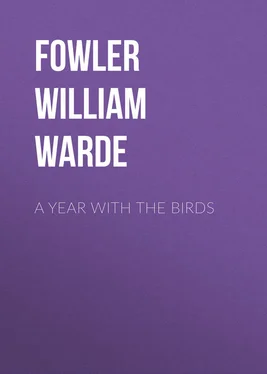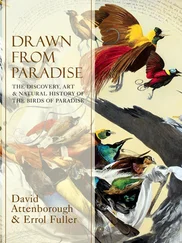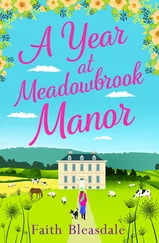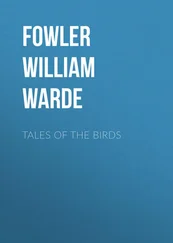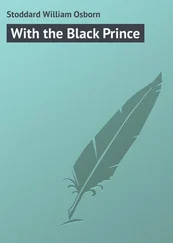William Fowler - A Year with the Birds
Здесь есть возможность читать онлайн «William Fowler - A Year with the Birds» — ознакомительный отрывок электронной книги совершенно бесплатно, а после прочтения отрывка купить полную версию. В некоторых случаях можно слушать аудио, скачать через торрент в формате fb2 и присутствует краткое содержание. Жанр: foreign_antique, foreign_prose, на английском языке. Описание произведения, (предисловие) а так же отзывы посетителей доступны на портале библиотеки ЛибКат.
- Название:A Year with the Birds
- Автор:
- Жанр:
- Год:неизвестен
- ISBN:нет данных
- Рейтинг книги:4 / 5. Голосов: 1
-
Избранное:Добавить в избранное
- Отзывы:
-
Ваша оценка:
- 80
- 1
- 2
- 3
- 4
- 5
A Year with the Birds: краткое содержание, описание и аннотация
Предлагаем к чтению аннотацию, описание, краткое содержание или предисловие (зависит от того, что написал сам автор книги «A Year with the Birds»). Если вы не нашли необходимую информацию о книге — напишите в комментариях, мы постараемся отыскать её.
A Year with the Birds — читать онлайн ознакомительный отрывок
Ниже представлен текст книги, разбитый по страницам. Система сохранения места последней прочитанной страницы, позволяет с удобством читать онлайн бесплатно книгу «A Year with the Birds», без необходимости каждый раз заново искать на чём Вы остановились. Поставьте закладку, и сможете в любой момент перейти на страницу, на которой закончили чтение.
Интервал:
Закладка:
The other two members of our first group (we are still in genus Sylvia ) are the two Whitethroats, greater and lesser, and we have not far to go to find them. They arrive just at the beginning of our Easter Term, but never come to Oxford in great numbers, because their proper homes, the hedge-rows, are naturally not common objects of a town. In the country the greater Whitethroats are swarming this year (1885), and in most years they are the most abundant of our eight warblers; and the smaller bird, less seen and less showy, makes his presence felt in almost every lane and meadow by the brilliancy of his note.
Where shall we find a hedge near at hand, where we may learn to distinguish the two birds? We left the Blackcaps and Garden-warblers at the upper end of the Park; we shall still have a chance of listening to them if we take the walk towards Parsons’ Pleasure, and here in the thorn-hedge on the right hand of the path, we shall find both the Whitethroats. 15 15 The spring of 1886 saw this hedge deserted by both species; the result of an outbreak of lawn-tennis in the adjoining field. They were lucky enough to find new quarters not far off.
As we walk along, a rough grating sound, something like the noise of a diminutive corn-crake, is heard on the other side of the hedge – stopping when we stop, and sounding ahead of us as we walk on. This is the teasing way of the greater Whitethroat, and it means that he is either building a nest in the hedge, or thinking of doing so. If you give him time, however, he will show himself, flirting up to the top of the hedge, crooning, craking, and popping into it again; then flying out a little way, cheerily singing a soft and truly warbling song, with fluttering wings and roughened feathers, and then perhaps perching on a twig to repeat it. Now you see the white of his throat; it is real white, and it does not go below the throat. In one book I have seen the Garden-warbler called a Whitethroat; but in his case the white is not so pure, and it is continued down the breast. The throat of both Whitethroats is real white, and they have a pleasant way of puffing it out, as if to assure one that there is no mistake about it.
But how to distinguish the two? for in size they differ hardly enough to guide an inexperienced eye. There are three points of marked difference. The larger bird has a rufous or rusty-coloured back, 16 16 The scientific name is appropriate, viz. Sylvia rufa .
and his wing-coverts are of much the same colour; while the back of the lesser bird is darkish or grayish brown. Secondly, the head of the lesser Whitethroat is of a much darker bluish-gray tint. But much the best point of distinction in the breeding season is in the song. As I have said, the larger bird warbles; but the lesser one, after a little preliminary soliloquy in an under-tone, bursts out into a succession of high notes, all of exactly the same pitch. It took me some time to find out who was the performer of this music which I heard so constantly in the hedges, for the bird is very restless and very modest. When I caught sight of him he would not stop to be examined closely. One day however he was kind enough to alight for a moment in a poplar close by me, and as I watched him in the loosely-leaved branches, he poured out the song, and duly got the credit for it.
We are now close to our old winter-station on the bridge over the mill-stream, and leaning over it once more on the upper side, we shall hear, if not see, both the remaining species of the warblers that Oxford has to show us. They are the only species of River-warblers that are known to visit England regularly every year; these two, the Sedge-warbler and the Reed-warbler, never fail, and the Sedge-warbler comes in very large numbers, but only a few specimens of other River-warblers have been found out in their venturesomeness. Still, every young bird-hunter should acquaint himself with the characteristics of the rarer visitors, in order to qualify himself for helping to throw light on what is still rather a dark corner of English ornithology. These same species which we so seldom see are swarming in the flat lands of Holland, close by us, and why should they not come over to the island which birds seem to love so dearly?
But there is no doubt that birds have ways, and reasons for them, which man is very unlikely ever to be able to understand. Why, as Mr. Harting asks, 17 17 Our Summer Migrants , p. 82.
should the Reed-warbler be so much less “generally distributed” than the Sedge-warbler? That it is so, we can show well enough even from Oxford alone. You will find Sedge-warblers all along the Cherwell and the Isis, wherever there is a bit of cover, and very often they will turn up where least expected; in a corn-field, for example, where I have seen them running up and down the corn-stalks as if they were their native reeds. But you must either know where to find the Reed-warbler, or learn by slow degrees. Parsons’ Pleasure is almost the only place known to me where
“The Reed-warbler swung in a nest with her young,
Deep-sheltered and warm from the wind.” 18 18 Mr. Courthope’s Paradise of Birds . No one who loves birds or poetry should fail to read Mr. Ruskin’s commentary on the chorus from which these lines are taken, in Love’s Meinie , p. 139 and foll.
There is, however, in this case, at least a plausible answer to Mr. Harting’s question. Owing to the prime necessity of reeds for the building of this deep-sheltered nest, which is swung between several of them, kept firm by their centrifugal tendency, yielding lovingly yet proudly to every blast of wind or current of water – owing to this necessity, the Reed-Warbler declines to take up his abode in any place where the reeds are not thick enough and tall enough to give a real protection to himself and his brood. Now in the whole length of Isis between Kennington 19 19 Unless it be in the westernmost branch, which runs at the foot of the Berkshire hills. Near Godstow the nest is to be found, as Mr. W. T. Arnold, of University Col., has kindly informed me: for obvious reasons I will not describe the spot.
and Godstow, and of Cherwell between its mouth and Parsons’ Pleasure, there is no reed-bed which answers all the requirements of this little bird. Now and then, it is true, they will leave the reeds for some other nesting-place; one of them sang away all the Summer Term of 1884 in the bushes behind the Museum, nearly half a mile from the river, and probably built a nest among the lilac-bushes which there abound. But that year they seemed to be more abundant than usual; and this, perhaps, was one for whom there was no room in the limited space of the reeds at Parsons’ Pleasure. Thick bushes, where many lithe saplings spring from a common root, would suit him better than a scanty reed-bed. 20 20 In the summer of 1886 this interesting bird was quite abundant in and round Oxford. If I am not mistaken a nest was built in the reeds of the fountain at the south end of the Botanic Garden, a perfectly secure spot. I heard the song there as late as the end of July.
There is no great difficulty in distinguishing Sedge- and Reed-warblers, if you have an eye for the character of birds. The two are very different in temperament, though both are of the same quiet brown, with whitish breast. The Sedge-bird is a restless, noisy, impudent little creature, not at all modest or retiring, and much given to mocking the voices of other birds. This is done as a rule in the middle of one of his long and continuous outpourings of chatter; but I one day heard a much more ridiculous display of impertinence. I was standing at the bottom of the Parks, looking at a pair or two of Sedge-warblers on a bush, and wondering whether they were going to build a nest there, when a Blackbird emerged from the thicket behind me, and seeing a human being, set up that absurd cackle that we all know so well. Instantly, out of the bush I was looking at, there came an echo of this cackle, uttered by a small voice in such ludicrous tones of mockery, as fairly to upset my gravity. It seemed to say, “You awkward idiot of a bird, I can make that noise as well as you: only listen!” —
Читать дальшеИнтервал:
Закладка:
Похожие книги на «A Year with the Birds»
Представляем Вашему вниманию похожие книги на «A Year with the Birds» списком для выбора. Мы отобрали схожую по названию и смыслу литературу в надежде предоставить читателям больше вариантов отыскать новые, интересные, ещё непрочитанные произведения.
Обсуждение, отзывы о книге «A Year with the Birds» и просто собственные мнения читателей. Оставьте ваши комментарии, напишите, что Вы думаете о произведении, его смысле или главных героях. Укажите что конкретно понравилось, а что нет, и почему Вы так считаете.
